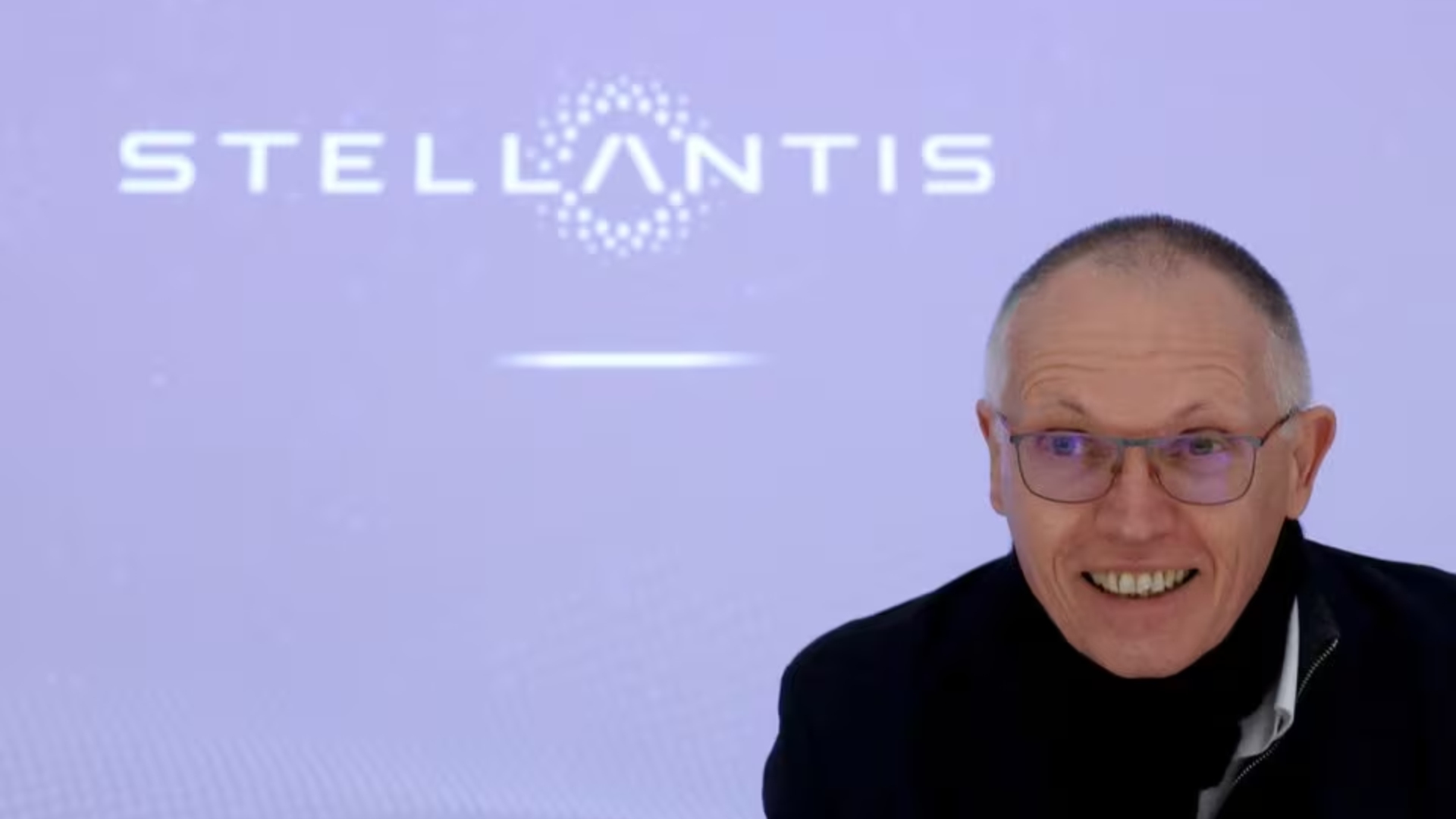MILAN, (Reuters) – A recent war of words between Italian Prime Minister Giorgia Meloni and Stellantis CEO Carlos Tavares has exposed a tough new reality: Europe’s one-time homegrown national automakers have become global players ready to exploit the EU’s overcapacity of car factories to obtain better government deals.
Stellantis, created by the combination of France’s Peugeot maker Peugeot PSA, Italy’s Fiat and Detroit’s Chrysler, accounts for virtually all of Italy’s car production. Fiat output has been falling as European sales have stagnated and Stellantis has shifted production to other countries in its sprawling global network.
Stellantis’ capacity utilisation rate at its European factories stood at 56% last year, down from 64% in 2019 and well below the 71% rate at Volkswagen, according to GlobalData data provided to Reuters. Automakers aim for at least 80% capacity utilization.
Stellantis is using its excess production capacity for leverage in bargaining for subsidies and policy support from Rome and governments in other countries. In the United States, state and federal officials offered subsidies to persuade Tavares not to close a Jeep plant in Illinois, which will now be used to build a new midsize pickup truck that fills a gap in the company’s U.S. model lineup.
The world’s third-largest automaker has so far allocated more European electric-vehicle production to France, Justin Cox, director of global production at GlobalData, told Reuters. The company’s North American truck and Jeep SUV operations generate the majority of the group’s profit. Stellantis will report 2023 financial results on Thursday.
“You can see why the Italians are upset … Italy has got a hell of a lot to lose,” Cox said. “All of their volume production is tied up with Stellantis.”
On paper, France and Italy appear evenly matched within Stellantis’ production system. Stellantis built 735,000 vehicles in France in 2023 and 750,000 in Italy.
But Stellantis is Italy’s sole major automaker, while France can also lean on Renault and is bolstered by more planned future EV models. Italy’s total automotive production stood at around 800,000 vehicles last year, versus 1.5 million units in France, according to AlixPartners.
Italian officials have demanded that Tavares rebuild Fiat production to 1 million vehicles a year. Meloni has criticized Stellantis’ decisions in nationalistic terms.
Meloni said in Parliament that the “alleged” merger that created Stellantis “actually disguised a French takeover.” She added: “It’s no coincidence that the group’s industrial choices take France’s interests in bigger consideration than Italian ones.”
Tavares – who has made Stellantis one of the industry’s most profitable companies – has countered that the automaker is “not afraid of the 1 million mark … But let’s not forget that it always (depends on) the size of the market.”
Tavares and Stellantis Chair John Elkann, scion of Italy’s Agnelli family, have engaged in talks with the Meloni government. The company has said Rome must do its part to support increased output – give incentives for consumers to buy EVs, lower energy costs and encourage the development of the EV charging network.
Earlier this month, Italy launched a new auto purchase incentive, worth 950 million euro ($1 billion) for this year.
Stellantis has been shifting production of cheaper vehicles to low-cost countries, assigning more expensive models to France or Italy.
Rome’s discontent reflects a growing awareness it has few tools to leverage Stellantis’ decisions, said Marco Santino, a partner at management consultants Oliver Wyman.
“Stellantis has no plans to divest from Italy, or from France,” he said. “But it’s a global group, which does not make industrial choices based on national preferences.”
Stellantis and its European rivals now face weakening car demand and intensifying competition, which usually means lower prices and tough choices. Chinese automakers are ramping up shipments of EVs that they are offering at prices European manufacturers cannot match if they want to turn a profit.

Italy, EU’s third-biggest economy, is home to Europe’s second-largest auto parts industry, according to local auto lobby ANFIA.
But 40% of suppliers specialise in combustion-engine technology and more than 70% are still exposed to it.
Santino said “brain” functions in Stellantis, such as engineering, R&D and platform design, have progressively shifted away from Italy since Stellantis was formed, as PSA was further ahead in developing EVs than Fiat-Chrysler.
“The French auto part industry … is now more innovative and stronger,” Santino said. “This is the real imbalance.”
France is one of Stellantis’ main investors with a 6.1% stake through state-backed investment bank Bpifrance, and has a representative on its board.
Italy has no presence in the group, but Industry Minister Adolfo Urso has said Rome is open to buying a stake.
“Product allocation does not depend on governance,” said Francesco Zirpoli, a management professor at Venice University, who notes Stellantis, and PSA before it, have always made a lot of cars in Spain.
Sales also matter.
Fully electric cars made up only 4% of Italy’s new car sales in 2023, but almost 17% in France.
“Italy is not perceived as one of those countries believing in the transition” to EVs, Zirpoli said.
Rather than complaints, “a smarter idea would be to shift talks over a practical level, like convincing Tavares to move back some EV-related R&D and product development functions to Turin, where skills are still high,” he said.
($1 = 0.9295 euros)
Reporting by Giulio Piovaccari in Milan and Nick Carey in London Editing by Joseph White and Matthew Lewis











